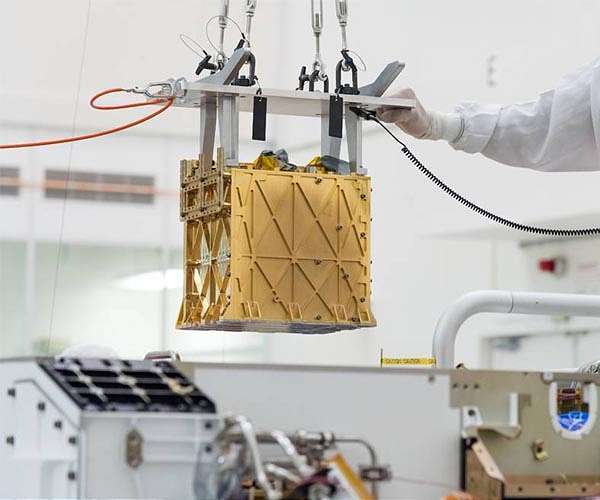21.08.2023

File image of the MOXIE instrument package onboard NASA's Perseverance rover on Mars.
Human missions to Mars necessitate an efficient launch system to ascend from the planet and rendezvous with Earth-bound return vehicles. The critical component for this ambitious task? Oxygen. Not only for ascent propellants but possibly also for life support.
To facilitate a crew of six astronauts, approximately 30 metric tons of oxygen propellants would be required for ascent. This significant amount would be cumbersome and costly to transport from Earth. The solution? Produce it right on Mars.
Drawing oxygen from Mars' abundant carbon dioxide (CO2) presents a significant advantage. This innovative technique is part of an approach termed in situ resource utilization (ISRU). Recent accomplishments, such as the Mars Oxygen ISRU Experiment (MOXIE) Project, have demonstrated the viability of a prototype system that can successfully convert Martian CO2 into oxygen (O2). Now, the focus shifts towards elevating this prototype into a fully operational system.
In their latest research, published in Space: Science and Technology, researchers Donald Rapp and Eric Hinterman lay the groundwork for a full-scale Mars ISRU system. Their model proposes producing 30 metric tons of liquid oxygen over 14 months, accounting for the diurnal and seasonal shifts in the Mars environment.
Their study outlines the ISRU system's architecture, setting the stage with a straightforward layout. Central to this system are electrolysis cells or stacks of these cells. These cells are responsible for converting Martian CO2 into oxygen. As they function, a compressor draws in the Mars atmosphere, compressing it from Mars' pressure to the designated stack pressure. A subsequent process involving heat exchangers pre-warms the incoming gas to the stack temperature before it's introduced into the electrolysis cells.
The system's intricacies are vast. For efficient oxygen production, the voltage across these cells needs to remain between specific parameters: above the 0.96 V Nernst voltage for oxygen production and below the 1.13 V Nernst voltage, where unwanted carbon deposition could occur.
Operational considerations are equally detailed. The proposed 14-month (420-sol) run aims to maintain an average oxygen production rate of 3.0 kg/h, leading to a total of 30,240 kg of oxygen. Various control schemes have been proposed to optimize operations, factoring in the electrolysis stacks, the compressor's revolutions per minute (RPM), and other system components.
Delving deeper into the technicalities, the researchers scrutinized area-specific cell resistance, current density, and flow rate across different control strategies. Each option displayed its unique characteristics, with specific operational voltages and configurations. Some configurations approached the boundaries of operational feasibility, signaling potential concerns.
In their analysis, the researchers provided a comprehensive understanding of power requirements. For the solid oxide electrolysis (SOXE) system, the electrochemical power varied between the control options, with additional power needs for preheating and compensating for heat loss. The study also examined the compressor's efficiency, taking into account motor losses and other factors. Finally, the rate of heat extraction from the system by the cryocooler was gauged, essential for cooling gaseous oxygen to its boiling point and subsequently liquefying it.
This extensive study on the ISRU system offers a promising step towards making Mars missions more self-sufficient, allowing future astronauts to utilize the resources of the Red Planet for their benefit.
Quelle: SD
